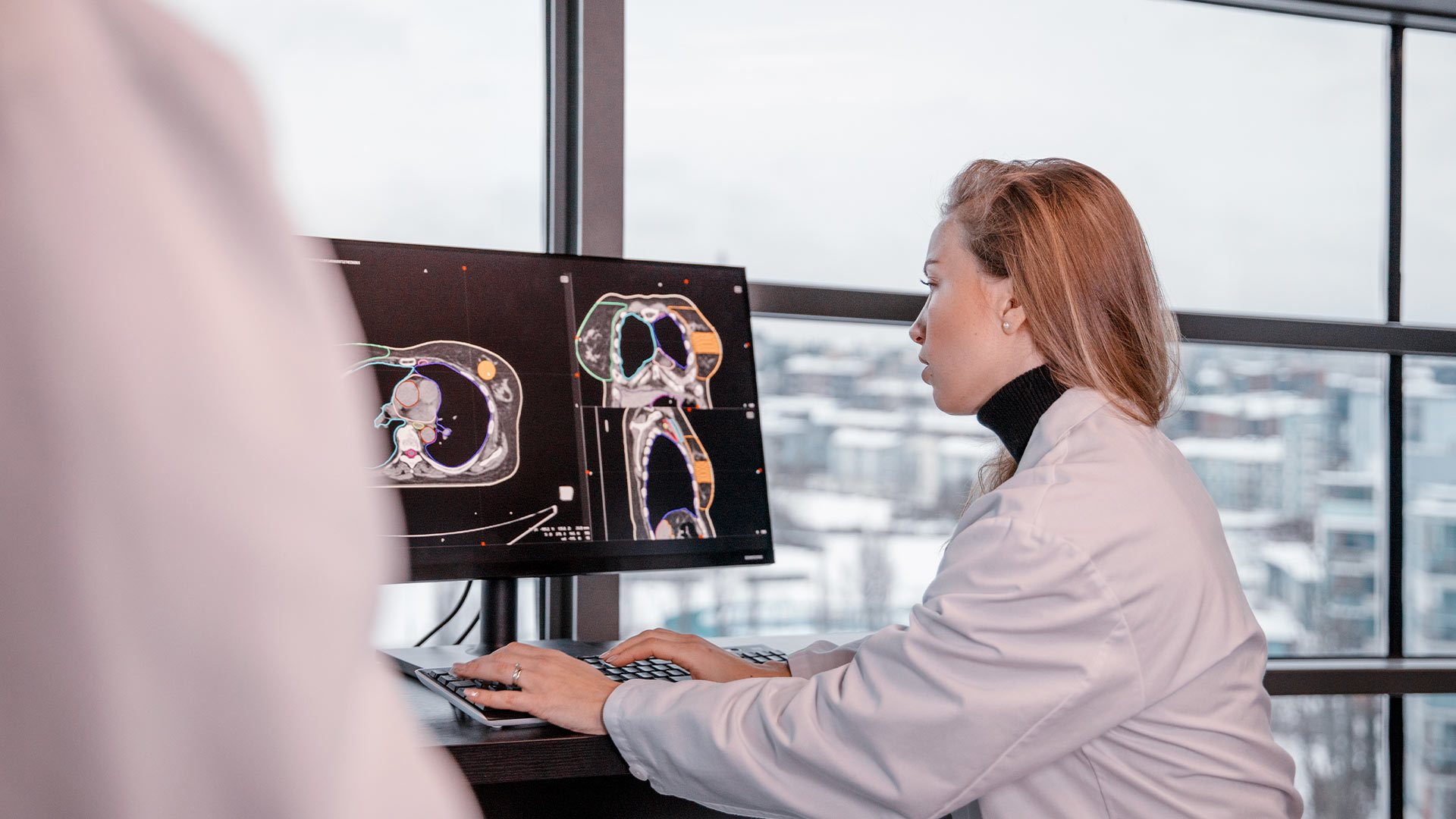Many regions of the globe face significant disparities between the need of radiation therapy and its availability [1]. Another challenge is providing adequate training for radiation oncology professionals [2]. The cancer burden is expected to rise everywhere, especially the low- and middle-income countries [3].
Artificial intelligence offers a wide range of opportunities to improve cancer care, and radiation oncology, being a technology-dependent field, seems to be the perfect match for this partnership.
The Potential of E-Learning interventions for AI-assisted Contouring Skills in Radiotherapy (ELAISA ) is a joint project of Aarhus University Hospital and the International Atomic Energy Agency (IAEA). MVision AI proudly supported this international multicentric randomized trial by providing AI-based predictions, which were manually adjusted by the participants after they attended a teaching session.
The aim of the study was to evaluate the impact of e-learning interventions on the organs at risk contouring for head and neck cancers. The first results of the project were presented at ESTRO 2023, and new data was revealed at ESTRO 2024 [4].
97 radiation oncologists from 23 radiotherapy centers in 22 low-and-middle-income countries (LMICs) participated in the study. They were divided into two groups, each receiving different combinations of teaching and AI assistance in contouring. The recently presented results come from 44 participants in the control group. After contouring the first case, used as a baseline reference, they received a mandatory online training session with an ESTRO school contouring specialist. Two weeks later, they contoured another case manually. The third case was delineated starting from AI-generated contours, and after six months, another case was contoured with AI assistance. All the participants’ contours were compared to a reference structure set created by overlapping the contours made by three head and neck experts.
The differences between contours were quantified using Volumetric Dice Similarity Coefficients (DSC) and showed improvements for some of the structures. The teaching session significantly enhanced the accuracy of oral cavity and thyroid, but greater improvements were gained in the follow-up cases where AI-assisted contouring was introduced. Increased medians of the DSC values were observed for the oral cavity, parotid and spinal cord and the effects were retained after 6 months.
The expert contours were made following previously published articles, and the teaching session discussed the same guidelines. MVision AI Contour+ fitted perfectly into this study design because the head and neck model was created based on these reference publications, so it’s consistently following their recommendations.
We congratulate the authors and everyone who contributed to this project, which provides valuable data on the potential of AI-based contouring models to have a complex and sustained positive impact. More than the pragmatic aspect of obtaining a result which was more similar to the experts’ contours, the participants learned from using the Contour+ head and neck model as a starting point, and they did not lose these acquired skills, as shown by the 6 months follow-up. Despite the reluctancy based on a hypothetical detrimental effect of using AI-based predictions on the training process, such results show the contrary.
MVision AI provides guideline-based models which were already shown to decrease inter-observer variation and save precious time. Guide is specifically designed to help radiation oncology professionals enhance their contouring skills while ensuring compliance with international standards.
References:
- Abdel-Wahab M, Fidarova E, Polo A. Global Access to Radiotherapy in Low- and Middle-income Countries. Clin Oncol (R Coll Radiol). 2017;29(2):99-104. doi:10.1016/j.clon.2016.12.004
- Zubizarreta EH, Fidarova E, Healy B, Rosenblatt E. Need for radiotherapy in low and middle income countries – the silent crisis continues. Clin Oncol (R Coll Radiol). 2015;27(2):107-114. doi:10.1016/j.clon.2014.10.006
- Anandasabapathy S, Asirwa C, Grover S, Mungo C. Cancer burden in low-income and middle-income countries. Nat Rev Cancer. 2024;24(3):167-170. doi:10.1038/s41568-023-00659-2
- Rasmussen ME et al. Teaching and AI-Assistance Improve Organs-At-Risk Contouring for Head-Neck Cancer in a Global Study, Radiotherapy and Oncology, Volume 194, supplement 1, pg 2733-36


